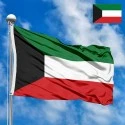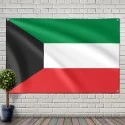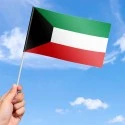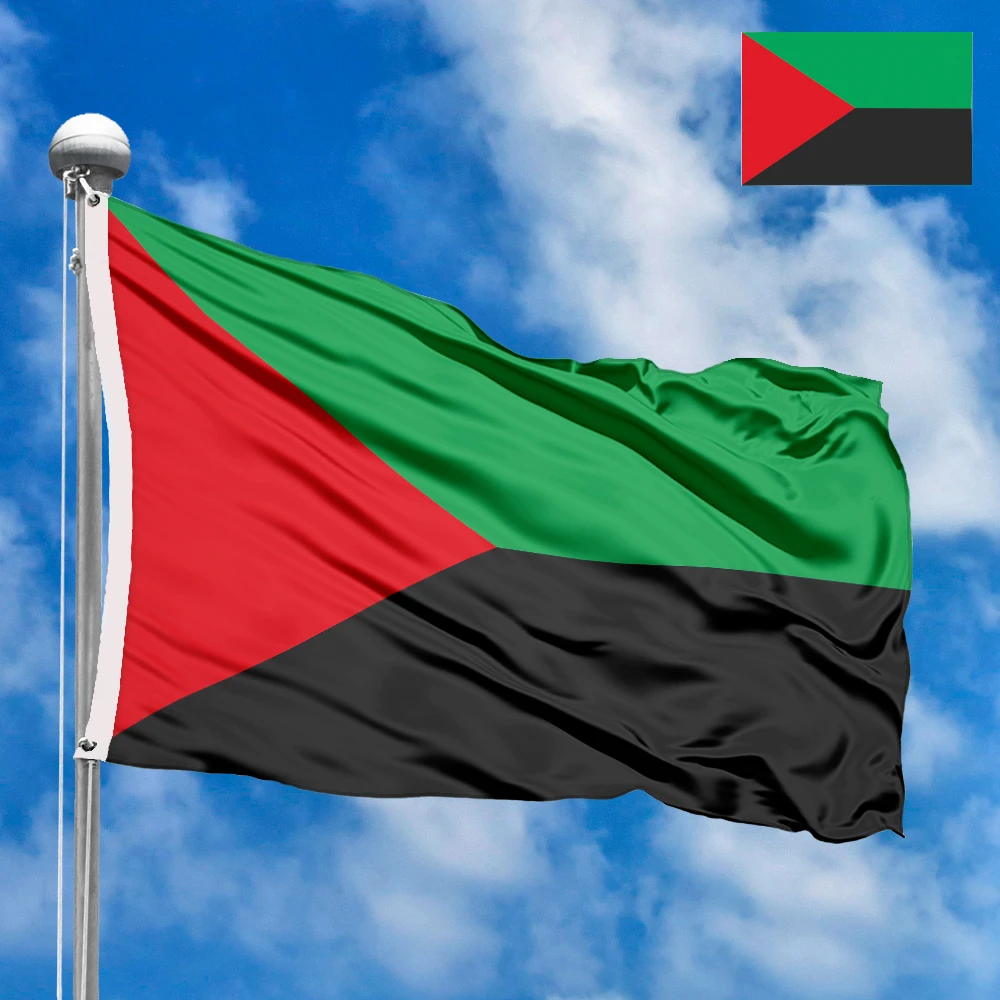The national flag of Kuwait is a powerful and evocative symbol, representing the rich heritage, unwavering determination, and ambitious future of this vibrant Gulf nation. More than just a piece of fabric, it embodies the spirit of its people, their historical struggles, and their enduring aspirations for prosperity, peace, and unity within the Arab world and beyond. Each color and element tells a significant part of Kuwait's unique story, reflecting its past, present, and future trajectory in the heart of the Middle East.
Design and Dimensions
The flag of Kuwait features a horizontal triband design, composed of three stripes of equal width. From top to bottom, these stripes are green, white, and red. A distinctive black trapezoid is placed at the hoist (left side) of the flag, extending along its full height. The official proportions of the Kuwaiti flag are 1:2 (height to width), giving it a elongated and elegant appearance. This specific design ensures that each element is clearly visible and contributes to the flag's overall symbolic impact.
Symbolism of the Colors and Elements
Every color and the unique trapezoidal shape on the Kuwaiti flag are laden with deep symbolic meaning, primarily drawing from traditional Pan-Arab colors and Islamic interpretations:
-
Green Stripe (Top): The green stripe at the top symbolizes fertile land and prosperity. It represents the lushness of the desert after rainfall, hope, and the agricultural aspirations of the nation. More broadly, green is a traditional color in Islam, signifying peace and the Islamic faith which underpins Kuwaiti society. It also reflects the historical "green" (fertile) past of parts of the Arabian Peninsula.
-
White Stripe (Middle): The white stripe in the middle signifies peace and purity. It represents the pure intentions of the Kuwaiti people and their commitment to peace both domestically and internationally. This color also embodies the honesty and integrity that are highly valued in Kuwaiti culture and governance. Historically, white banners were used by various Arab dynasties.
-
Red Stripe (Bottom): The red stripe at the bottom symbolizes bravery, courage, and the blood shed for the freedom and independence of Kuwait. It stands as a testament to the sacrifices made by previous generations to protect the nation's sovereignty and ensure its continued existence. Red is also a traditional color associated with the Hashemite dynasty and its struggle for Arab unity.
-
Black Trapezoid (Hoist Side): The unique black trapezoid at the hoist side of the flag represents the fertile soil of Iraq, a geographical and historical reference to the historical "black lands" (Iraq's fertile plains) from which the Kuwaiti people are said to have originated, symbolizing battles and past struggles. It also stands for the dark times of occupation and the determination to overcome adversity, representing the defeat of enemies and a strong foundation for the future. The trapezoid shape is distinctive and sets the Kuwaiti flag apart from other Pan-Arab flags.
History of Creation and Adoption
The history of the Kuwaiti flag is closely linked to the country's evolution from a British protectorate to an independent nation. Prior to 1961, Kuwait used various flags, primarily red banners, often inscribed with Arabic calligraphy (such as "Kuwait" or "There is no god but Allah, Muhammad is the Messenger of Allah") or a white vertical stripe at the hoist. These early flags reflected the influence of the British Empire and the traditional Islamic symbols.
As Kuwait prepared for full independence, there was a desire to adopt a modern national flag that would truly represent its identity and aspirations. A competition was held, and the current design was selected. The flag was officially adopted on September 7, 1961, following Kuwait's declaration of full independence from the United Kingdom on June 19, 1961. The design was carefully chosen to incorporate the Pan-Arab colors, reflecting Kuwait's solidarity with other Arab nations, while adding a unique element (the black trapezoid) that symbolized its own specific history and identity. The symbolism was also aligned with a poem by Safie Al-Deen Al-Hali, an Iraqi poet, which inspired the Pan-Arab colors: "White are our deeds, black are our battles, green are our lands, red are our swords."
Significance for the Inhabitants
For the people of Kuwait, the national flag is a source of immense national pride and a powerful symbol of their sovereignty and unity. It represents their journey from a small trading port to a modern, independent state. The flag embodies the values of their society, including their strong Islamic faith, their commitment to peace, and their resilience in the face of challenges, particularly the memory of the Iraqi invasion and subsequent liberation.
It fosters a deep sense of belonging and patriotism, uniting citizens from diverse backgrounds under a common banner. During national celebrations, public events, and in schools and homes, the flag is proudly displayed, serving as a constant reminder of Kuwait's rich heritage, its aspirations for a prosperous future, and the sacrifices made to secure its freedom. It symbolizes their collective identity and their determination to continue building a stable and thriving nation in a sometimes turbulent region.
Interesting Facts
-
Pan-Arab Colors: The Kuwaiti flag is one of many Arab flags that incorporate the Pan-Arab colors (red, white, green, and black), symbolizing Arab unity and liberation movements. These colors were popularized during the Arab Revolt against the Ottoman Empire.
-
Poetic Inspiration: The symbolism of the colors is often linked to a famous poem by Safie Al-Deen Al-Hali, providing a historical and literary depth to the flag's meaning.
-
Unique Trapezoid: The black trapezoid at the hoist is a distinctive feature, differentiating Kuwait's flag from other similar Pan-Arab designs which often use triangles or vertical stripes at the hoist.
-
Symbol of Resilience: During the Iraqi occupation in the early 1990s, the Kuwaiti flag became an even more potent symbol of resistance and the eventual liberation of the country. Displaying the flag was an act of defiance.
-
Maritime Heritage: Although not directly depicted, the colors and their meanings also subtly echo Kuwait's rich maritime history as a pearl trading and seafaring nation. The white represents the purity of the pearls, and the red the determination of the divers.
-
Post-Independence Creation: Unlike some older national flags, the current Kuwaiti flag was designed and adopted specifically to mark its independence in the modern era, reflecting a conscious effort to forge a new national identity.
In the demonstration images, full-size flags are shown with proportions of 2:3, and hand-held flags with proportions of 1:2.







 Waving flag
Waving flag
 Sizes:
Sizes:
 Round flag
Round flag
 Sizes:
Sizes:
 Rectangular flag 2:3
Rectangular flag 2:3
 Sizes:
Sizes: